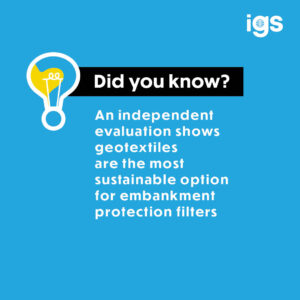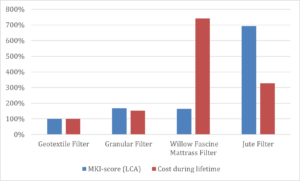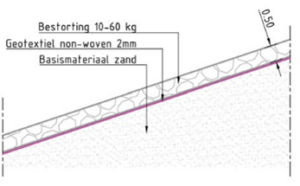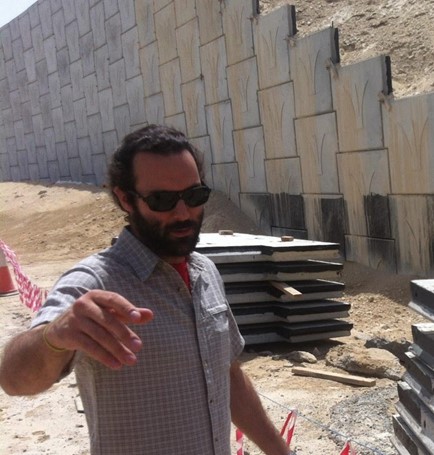
Did You Know?… synthetic geotextile filters cost 1.5 times less than granular filters + three to eight times less than using natural fibre materials
In the Netherlands, geotextiles are commonly used as a filter layer beneath stone revetments to prevent rocks from sinking into the foundation and to protect the underlying material from erosion.
A 2022 sustainability study, commissioned by the Ministry of Infrastructure and Water Management in the Netherlands and conducted by Witteveen+Bos, compared four types of embankment protection filters: synthetic geotextile, granular, brushwood, and biobased biodegradable jute. The study assessed their environmental impact, durability, and economic feasibility.
The Life Cycle Analysis, based on the Dutch Environmental Cost Indicator (MKI), revealed that revetments with synthetic geotextiles have the lowest environmental impact across the lifespan of a revetment. Revetments with granular and natural fibre filters showed a higher environmental impact due to their greater material weight and the need for frequent replacements over a 50-year period.
The revetment with jute filter, for example, required replenishment and reconstruction nine times within the same timeframe. Therefore it is only suitable for temporary applications. In contrast, a construction using synthetic geotextiles does not require such reconstruction after installation, highlighting their superior cost-efficiency and durability. However, proper installation and management are crucial to ensure optimal performance and prevent plastic pollution.


Geosynthetic solutions should be fully investigated on every infrastructure project to ensure they meet the needs of the present without compromising the ability of future generations to meet their own needs.
**
Find out more about how geosynthetics are making a difference by downloading the IGS Sustainability eBook here or visiting our Sustainability page.
SEE ALSO: The full report in Dutch can be viewed here: https://open.overheid.nl/documenten/ronl-c4b93ff71dd8974b786a634016d9b30201f5fe97/pdf






















